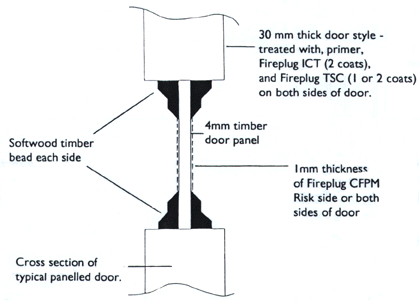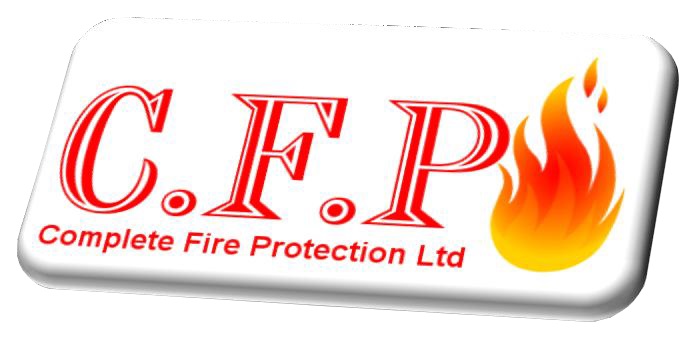Upgrading System For Timber Panelled Doors
Fireplug FUS is designed to upgrade, to fire door standard, new or existing timber panelled doors.

Visit Our Online Shop
Upgrading System For Timber Panelled Doors
Reference
Fireplug FUS is designed to upgrade, to fire door standard, new or existing timber panelled doors. The system allows ornate and decorative doors to keep their original character and appearance, and in most cases, without taking them off their hinges.
Description
Fireplug CFPM is an intumescent membrane paper 0.5mm thick, supplied 550mm wide to any length up to 100 metres long and is grey/black in colour.
Fireplug ICT is a water based acrylic intumescent coating available in both a clear and coloured finish.
Fireplug TSC is a sealing coat to help against mechanical damage and the ingress of moisture. Fireplug TSC can give a decorative finish and is available in a full range of colours.
Action
Under the action of heat the Fireplug ICT – CFPM expands to form an insulating layer on the surface of the substrate. The insulating layer helps to maintain the integrity of the substate for the required period.
Performance
Fireplug FUS was tested to British Standards BS476, part 22, test No. FRI687, in April 1993 and BS476, part 20, on 14th May 1993, test No. IT360. Full reports are available on request.
Six number 4mm thick pine panels achieved FD20 status in test FRI687. The pine panel was part of a Victorian panelled door with Fireplug FUS applied directly onto the existing gloss paint, to the furnace side of the door.
A 4mm thick plywood panel achieved in excess of 30 minutes in test No. IT360, with Fireplug FUS to both sides of the panel.
In each test the timber surround was 35mm thick softwood, and was treated with two brush coats of Fireplug ICT coating, plus a coat of Fireplug TSC clear top coat.
Download FR1687 Test Certificate
Download IT360 Test Certificate
Stage 1 - Primer Coat
Before Fireplug FUS can be applied a sound clean surface must be attained to allow good adhesion of the Fireplug FUS system. Existing painted or varnished finishes must be carefully prepared ensuring all dirt and grease deposits are removed along with any loose flaking paint or varnish. A thorough rub down with sandpaper and a wipe over with white spirit, using a clean cloth, should leave a suitable surface to work with.

Stage 2 - Panels
Cut to size Fireplug CFPM paper to adhere onto the panels. A little time and care is needed here as it is important to get the Fireplg CFPM to butt against the edges of the framing styles on all sides. Once satisfied, apply a brush coat of Fireplug ICT to the panel. The Fireplug ICT has a thick consistency so do not overload the brush, be prepared to spread the coating, stretching it evenly over the panel. Offer the Fireplug CFPM to the panel and adjust it to fit as required, there will be a certain amount of slip with the Fireplug ICT but be careful not to tear the Fireplug CFPM. If adjustment is required to position the Fireplug CFPM use the flat of the palm over as much of the panel as possible and slide the paper slowly. The second layer of Fireplug CFPM can then be applied immediately. The final operation at this point is to apply two coats of Fireplug ICT over the entire surface being treated. This first coat can be carried our straight away and then left to become tacky before applying the second brush coat of Fireplug ICT.
NB. Fireplug CFPM intumescent membrane has a smoother side. If the panel is to be painted after upgrading, then we recommend adhering the rough side to the panel. Thus allowing a superior surface for decoration. Alternatively if the door is to be varnished, therefore a wood grain finish is required, either face of the Fireplug CFPM can be adhered to the panel, as a wood veneer is applied directly onto the papered panel prior to the last two coats of the Fireplug ICT.
Stage 3 - Top Coat
Fireplug TSC must be applied onto a dry surface. Allow at least 24 hours at normal room temperature for this. Ventilation is important to reduce the humidity of the drying area and therefore the drying time. Once dry a second coat of Fireplug TSC can be applied if humidity levels up to 90% can be expected. Also two coats of coloured Firelpug TSC may be needed if a higher gloss finish is required or opacity is poor. Prior to each Fireplug TSC coat being applied, a light rub down using a fine sand paper can enhance the end result.
NB. We recommend using a high quality fine, soft brush to apply Fireplug FUS.
The painted door application details laid out above, describe the actual procedures carried out on the tested door. A door was chosen that had soft wood panels only 4mm thick and framing only 30mm thick. This gives a serious problem regarding maintaining integrity in a fire, as there is very little substance to protect. It would be fair to say that the thicker the panels and framing is then the longer the door will last. Other factors detrimental to the door’s possible stability and integrity were that, as a Victorian in age it had seen various coats of paint laid one on top of the other. There was also various signs of wear and tear, corners rounded and, in places joints had split. In all the door should be a fair representation of a ‘worst case’ scenario. The door edges and head were protected by Fireplug FPSM surface mounted intumescent strip.
A further aspect of the Fireplug FUS system is that it can be applied on site without the doors being removed. This makes for the minimum of disruption and lessens the chance of damaging what could be a valued piece of history.
Installation Guide
Get a Quote For Your Project
Contact Us
Unit 2/Ferry Steps Industrial Est/Albert Rd, St Philips Bristol BS2 0XW
0117 971 1917

